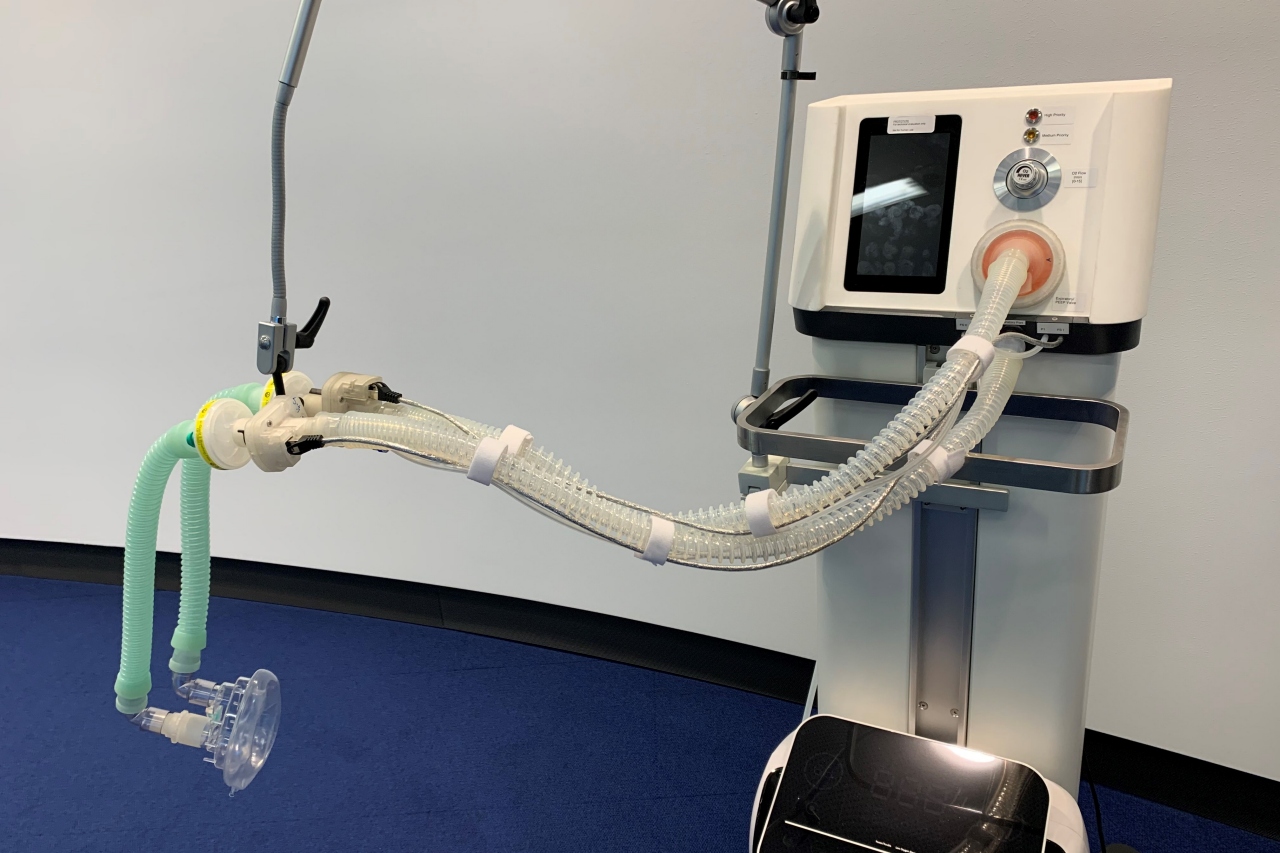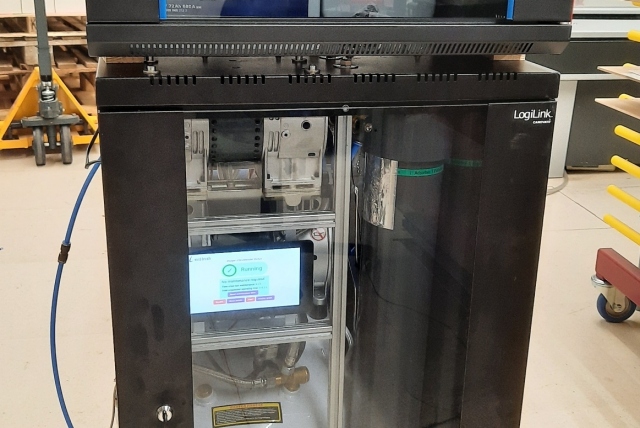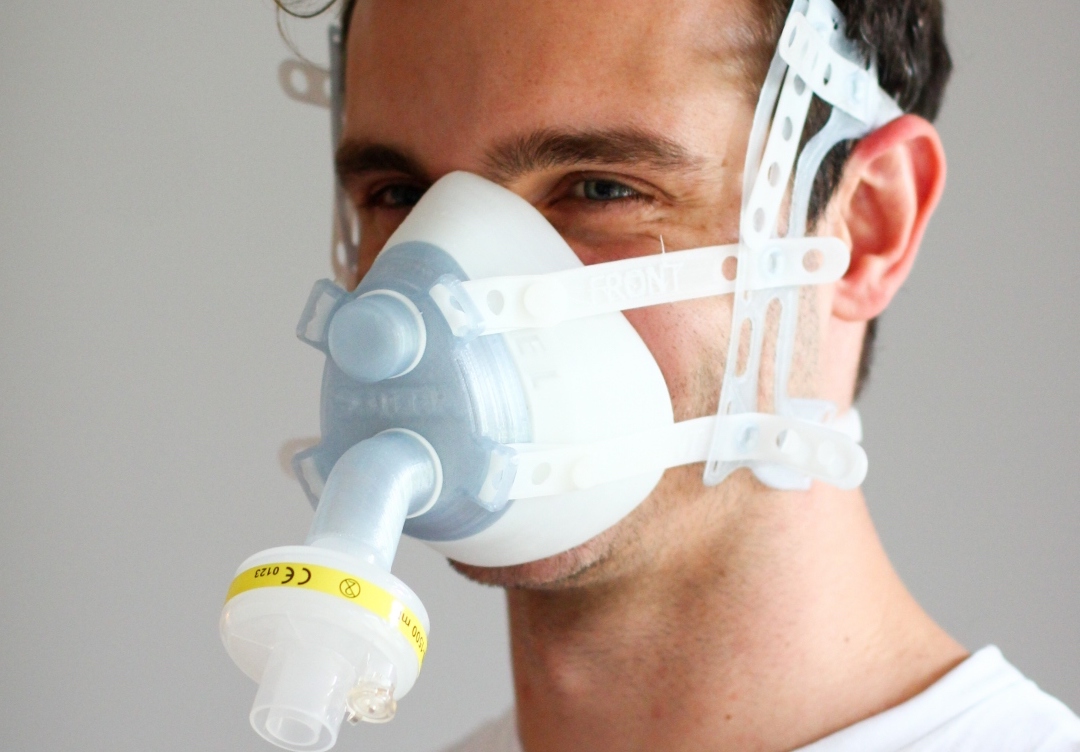Global reinsurance business Munich Re and technology research firm Fraunhofer have awarded €1m as part of a competition to 3D print medical devices for COVID-19 sufferers.
Launched at the pandemic’s outbreak, The Give a Breath Challenge tasked contestants with developing low cost ventilator parts that could be 3D printed anywhere in the world. Together, the firms provided a contest prize money and budget of €1 million, while making blueprints and training apps freely available to those countries with high demand. Leveraging their expertise, networks and financial resources, the sponsor companies aim to advance the decentralized treatment of COVID-19 patients in regions that are hardest-hit.
“The coronavirus has reached every country on earth, but medical help for patients is far from available everywhere,” said Torsten Jeworrek, Member of the Munich Re Board of Directors. “The participants showed that with creativity, commitment and energy, opportunities can be created quickly that help save human lives. My special thanks go to you!”
“Innovation is the engine of society and economy – initiatives such as the Give a Breath Challenge drive it.”

The Give a Breath Challenge
The challenge began in March 2020 as the COVID-19 pandemic started to accelerate globally, and it became clear that medical supply shortages were getting critical. Initially, the Give a Breath Challenge was launched to find 3D printed designs in three separate categories. The first part of the contest looked for designs of non-invasive ventilators and oxygen concentration devices.
In the second section of the contest, entrants were asked to 3D print non-invasive ventilation masks, and the last portion was dedicated to providing virus knowledge to newly-hired staff. Overall, Munich Re and Fraunhofer aimed to combine the entries from all three categories, to produce the technical basis for a 3D printed holistic ventilation system.
The competition’s winning designs
Out of more than 150 applications, seven teams were selected for the finals in April, and supported with producing final prototypes. Once all the finalists had completed their designs, the devices were shipped to experts at ETH Zurich. Testing was conducted between the university and Dr. Dieter Köhler, the former President of the German Society for Pneumology (DGP).
Assessments were carried out in compliance with international medical regulations, so that the winning designs could be brought into service if required. Selecting the winners on this basis of practicality, the judging panel chose two winners to share the award for the category of non-invasive ventilators. The winning SmartCPAP team worked together with medical firm AC Aircontrols to create a flexible device that supports a patient’s spontaneous inhalation and exhalation.

Using the SmartCPAP system, doctors can provide support for as long as possible without intubation, so that intensive-care beds can be kept free for serious cases. The Vivid Breath team also received an award for best non-invasive ventilator. Vivid Breath combined an O2 concentrator with a ventilator to produce a system capable of providing oxygen to six patients at once. The device was also “exceptionally inexpensive,” and reportedly possible to 3D print with locally-sourced parts anywhere in the world.
Team Soteria’s entirely 3D printed device won the award for best breathing mask design. Featuring an inventive inner honeycomb structure, the mask is able to adapt to the different face shapes of its users, ensuring that it’s optimally sealed. The easy-to use apparatus is compatible with a number of ventilators, and comes with picture-based and video assembly instructions.

“Our face mask allows for decentralized manufacturing, can be produced with materials that are widely-available, and it’s adjustable to the affected people,” said Moe Lueker, Soteria team member and student at the Technical University of Munich. “We can make help available quickly, when and where it’s needed the most.”
Finally, the “Virus Fighter” group’s handbook won the medical training materials category. The team from Fraunhofer’s own Institute for Manufacturing Engineering and Automation (IPA) developed a digital COVID-19 manual. Working with research firm Festo SE & Co. KG, the researchers uploaded their guide to a mobile app, which provides advice on maintaining 3D printed medical devices, and helping patients.
Making the 3D printed devices accessible
Following the success of the competition, the winning blueprints, guides and assembly instructions are set to be made available to governments and partners around the world. The contest’s online manual will also be made accessible via an online app. By working independently of local supply chains, the contest’s organizers aim to support badly-affected areas quickly, 3D printing devices for immediate use.
The University of Stellenbosch in South Africa has already signed up to pilot the devices. Cape Town-based Tygerberg Hospital and the Center for Rapid Prototyping and Manufacturing in Bloemfontein have also shown interest in adopting the printed ventilators. In the coming weeks, clinical studies and finishing tests will be conducted, in order to gain approval for the apparatus from the South African regulatory authority.
Professor Ralf B. Wehrspohn, Head of Technology Marketing and Business Models at Fraunhofer, thanked participants for their contribution to the success of the contest. “Events like the current COVID-19 pandemic, challenge us to look for solutions together and implement them quickly and efficiently, ” said Wehrspohn. “I am particularly pleased about the good partnership and cooperation with Munich Re and all partners and participants who have taken us a big step further in overcoming the medical crisis.”
3D printing’s COVID-19 response
The 3D printing community has sprung into action following the COVID-19 outbreak, with many companies and researchers committing their resources to fighting the disease. Additive manufacturing has proved particularly adept at addressing the need for ventilator parts, with a number of innovative designs being produced.
A team from Smith College won the Covent-19 Challenge design contest in May 2020, with its novel “Smithvent” partially-3D printed ventilator. The device’s enclosure, ISO fittings, and mounting blocks can all be created using Fused Deposition Modeling (FDM) 3D printing.
Researchers from volunteer group Helpful Engineering 3D printed an emergency ventilator based on a U.S. Army design from 1965. The device consists of two plastic plates sealed together, creating a series of internal channels that direct oxygen into a patient’s lungs.
Italian supercar manufacturer Lamborghini has redirected its in-house 3D printing facilities to manufacture medical equipment to fight the pandemic in Italy. The company’s R&D team helped to design and manufacture lung simulators for respirator firm SIARE Engineering International Group.
Nominations for the 2020 3D Printing Industry Awards are still open, let us know who is leading the industry now.
The fourth edition of the 3D Printing Industry Awards Trophy Design Competition is now underway. Enter your design for the chance to win a CraftBot Flow 3D printer.
To stay up to date with the latest 3D printing news, don’t forget to subscribe to the 3D Printing Industry newsletter or follow us on Twitter or liking our page on Facebook.
Are you looking for a job in the additive manufacturing industry? Visit 3D Printing Jobs for a selection of roles in the industry.
Featured image shows a COVID 19 patient being treated using a ventilator. Image via Munich Re.



